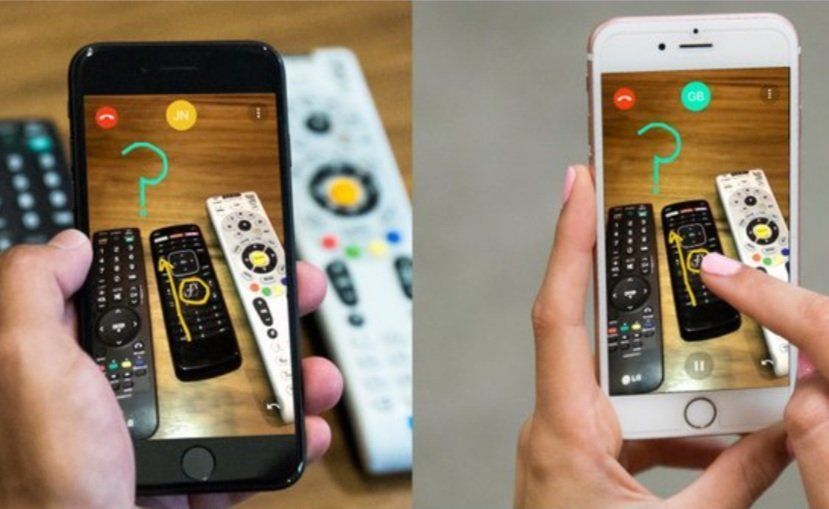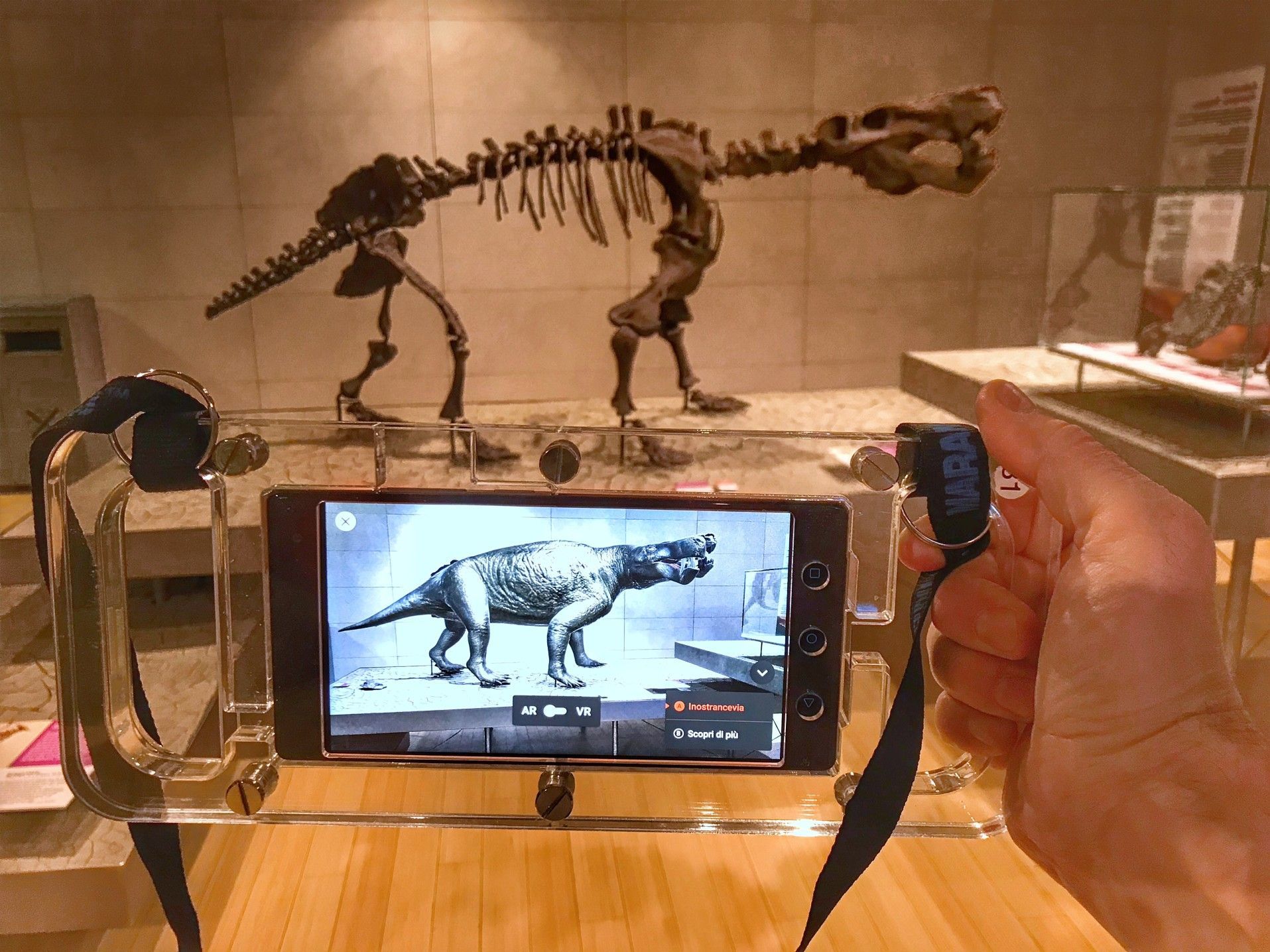EXPERTS ESTIMATE THAT BY 2028 ANNUAL REVENUE FROM AR WILL BE $340 BILLION USD
Will some of that revenue be headed to your business?
“We need to do something with AR, but not sure what.”
Sound familiar? These are common statements we hear from current clients and prospective clients. Everyone is talking about AR and it seems that businesses are scrambling to figure out how to jump on the bandwagon. From the explosion of speculative “Here is how AR will change your life” think pieces to insanely well-funded startups , augmented reality is on everyone’s lips. And for good reason. The Augmented Reality (AR) Market size is expected to reach USD 100.24 billion by 2024 , with the growth is driven by advances in hardware technologies and sophisticated mobile software.” Brands like Cover Girl , IKEA , Warby Parker , and American Airlines have all launched consumer web or mobile-based AR experiences within the last 6 months.
Okay, cool. So then why does it still feel like there are very few useful AR experiences in the world. People seem…over it?
Gartner’s 2017 hype cycle explains it for us. According to them, AR is smack dab in the trough of disillusionment .
Trough of Disillusionment: Interest wanes as experiments and implementations fail to deliver. Producers of the technology shake out or fail. Investments continue only if the surviving providers improve their products to the satisfaction of early adopters.
Gartner put this out over 8 months ago and as far as I can tell, we're still in the same stage. AR has evolved well past the “It’s cool because it’s new” stage. Customers and users are seeking real value and utility, not just a gimmick.

This doesn’t mean AR isn’t worth pursuing. Quite the opposite, it means that the players that can deliver what users want will become sustaining leaders. This is a huge opportunity.
After the trough of disillusionment comes the slope of enlightenment as adoption grows and customer expectations are finally met. How can you deliver what users want and achieve a leadership position?
First, ask yourself these 5 questions.
1. What are the underlying user needs that you want to solve?
Any product that isn’t driven by an underlying user need (no matter how novel) is doomed to be labeled a gimmick or worse, cast aside by your users. Here are a few examples of user needs that for which an AR solution may be valuable.
- I want to see how products look in my space or only body to help with my purchase decisions.
- I want to see how objects look from all dimensions to help me accomplish a task.
- I want to see instructions or directions applied to my real world space or objects to help me accomplish a task.
- I want help with my current task from team members who are not in the same physical space.
After you determine the user need, ask yourself this question - Could these user’s goals be better accomplished by a regular mobile app or web experience? If no, what incremental value would AR would provide?
2. What role would the “real world” play in this experience?
Gone are the days of users’ delighting in having an animation jump out of the ground or table. Augmented reality provides real value when it interacts meaningfully with real world objects.
Whether it’s spatial positioning, face tracking, or an overlay that provides contextual information, the real magic is in the the incremental value delivered by the interchange between virtual and physical. So ask yourself, what role will the user’s environment or body play in this experience? How does augmenting that role with 3D objects make their jobs/tasks/lives easier/more engaging?
Here are two examples of AR apps that utilize the real world in a meaningful way.

Houzz's View In My Room 3D too l - Users selects furniture and accessories to place in their room to gauge style, lighting, and scale.

The Chalk app uses AR and video to help people solve problems. One person getting advice points their rear camera at whatever they need explained to them, and the other person draws on their own screen as they speak their suggestions.
3. Who are your target users and what are their digital preferences?
This is a critical consideration. Who are your current and/or target customers? What are their demographics? What is their appetite and familiarity with new technologies? You can find decent research online, but the best information comes from speaking directly to your customers or target customers. You can very cheaply and quickly conduct an informal research session. One of our favorite questions to ask is, “What are your favorite digital experiences out there today? Why? What do these experiences give you?” and “What are your least favorite? Why?” and “How often do you download new apps or explore new technologies? The answers to these questions are a treasure trove of insights about your customers, their digital preferences, online habits, and turnoffs. If your customers only use a few apps, don’t like fussing with new technologies, or have major complaints about your current digital experiences, that should give you pause about introducing AR to them. If they love trying new digital experiences, proceed to the next step.
Another thing to consider, for now, most plane and marker detection capabilities require downloading an app. Google and other startups are trying to change that, but that is a barrier that we face today. So ask yourself if the context in which your users will engage in this experience will be conducive to download and onboarding in a new app.
As an aside, I am writing this article with the assumption that you are considering launching a consumer AR experience. Other common use cases are productivity apps in the workplace (think sales team with company issued iPads, or industrial teams with custom headworn AR devices). If your product falls into those categories, these questions still very much apply, however the issue of adoption is mitigated. What you now have to consider the training costs, workplace satisfaction, and other ways of measuring ROI.
4. What devices are your target users most likely to have?
The answer to this question will help inform your decision to pursue AR strategy and helps to suss out some core product requirements. Newer iOS and Android devices will support more modern AR experiences with horizontal, vertical, and irregular surface detection. AR comes in different forms. Older devices will generally rely on marker-based AR, which requires a physical marker and loses tracking if the camera moves away from the marker. If your users tend to have modern devices, great! If not, you’ll have to consider whether a marker-based AR experience or an overlay experience will meet their needs.
5. How will you measure success?
Let's be honest, launching a well-designed, seamless AR experience is not (and should not) be cheap. Will it be worth it? Perhaps your team has crunched the numbers and they can project that this product will increase revenue by x% over the next year. Great! Then you have an easy decision ahead of you. If the results for your business are less clear-cut, here are some ways of thinking about ROI when it comes to an AR product.
- Will this experience help my employees be more productive?
- Will this experience encourage my customers to purchase/engage more as a result?
- What’s the value to my brand being perceived as innovative or cutting-edge?
- Is there PR value in launching an AR product?
- What’s the value in delighting/entertaining your current or future customers?
- What’s the value in having a key product differentiation?
- What’s the value in staying ahead of competitors in adopting new technologies (even if there isn't an immediate return?)
Of course, there are many other questions you'll need to ask before, but these 5 should go a long way to help shape the opportunity and potential impact to your teams/customers/bottom line.
Beyond this point, you may want to reach out to studios, agencies, and firms like Brain Spice that specialize in designing and building AR experiences. Make sure these potential partners have not only have design and development chops, but have solid points-of-view about where the technology is headed and understand your business objectives. That is critical to helping you future-proof your investment and make sure it doesn't stay in the dreaded trough of disillusionment.



